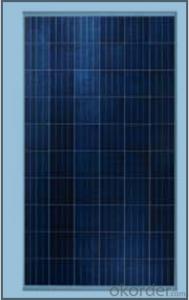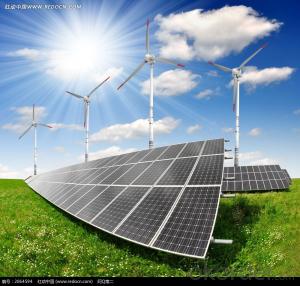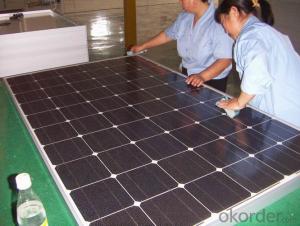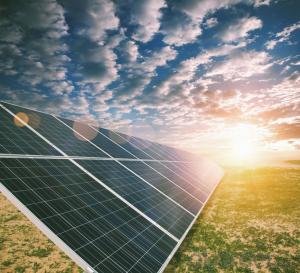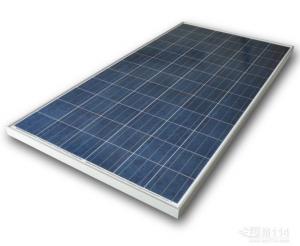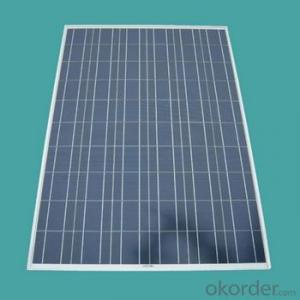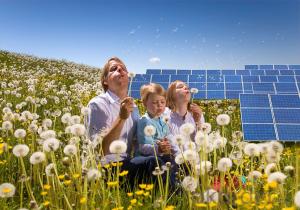Solar PV Panel 250Watt Polycrystalline Solar Panels for Greenhouse
- Loading Port:
- Tianjin
- Payment Terms:
- TT OR LC
- Min Order Qty:
- 290 pc
- Supply Capability:
- 26800 pc/month
OKorder Service Pledge
OKorder Financial Service
You Might Also Like
Solar PV panel 250Watt Polycrystalline Solar Panels
Cell:polycrystalline silicon solar cells 156mm square
Number of cells and connections:60 in series
Application :DC24V system
Maximum system voltage(V) DC1000
Series fuse rating (A): 15
Nominal power(W):250W
Dimension(mm)1640*992*50
Open circuit voltage:37.8V
Maximum power voltage:38.4V
Short circuit current:31.8A
Maximum power current:8.25A
Maximum power:250W
Module efficiency:15.10%
Power output tolerance:0~﹢3%

Specifications:
solar panels from 5W--300W, made of TAIWAN MOTECH brand cells,with CO in TAIWAN,Mono and Poly with VDE,IEC,CSA,UL,CE,ISO.
We import solar cells from Taiwan Motech brand, with this CO in taiwan and our CSA certification,we can still sell goods to Anti-dumping areas like USA. Our main products are solar panels, off grid and on grid solar home systems , solar street lighting systems, solar water heating system,solar pump,solar attic fan, solar DC LED lights and solar DC refrigerators.
Certificates : ISO, CE, VDE IEC, MCS, CSA-UL, CEC.
Delivery time: sample 10days, order 25-30days.
Sample: charged.
Payment term: T/T 30% as deposit, 70% before shipment. Or irrevocable L/C at sight.
Trade term: FOB Shenzhen or CIF destination seaport or Airport.
Characteristics:
I.Solar Cell : High efficiency crystalline solar cell. Even if under the weak light, the solar module can produce maximum power output.
II.Tempered glass (toughened glass): Anti-reflecting coating and high transmission rate glass increase the power output and mechanical strength of solar module.
III.EVA and TPT: Using high quality EVA and TPT to prevent destroying and water.
IV.AI frame: Without screw, corner connection. 6 holes on the frame can be installed easily.
V.Junction box: Multi function junction box with water proof.
VI.Long lifetime: ≥25 years; Less power decrease.
VII.Good performance of preventing from atrocious weather such as wind and hails.
VIII.Resisting moisture and etching effectively, not effected by geology.
IX.The certificate issued by international authority: UL, TUV, IEC, VDE, CE.
Quality and Safety
1. Rigorous quality control meets the highest international standards.
2. High-transmissivity low-iron tempered glass, strong aluminium frame.
3. Using UV-resistant silicon.
4. IS09001/14001/CE/TUV/UL
Warranties
1. 10 years limited product warranty
2. 15 years at 90% of the minimal rated power output
3. 25 years at 80% of the minimal rated power output
Technical date :
ITEM NO.: | Poly 156*156 cell ,60pcs . Power range from 230Wp-260Wp | ||||||
Maximum Power(W) | 230 | 235 | 240 | 245 | 250 | 255 | 260 |
Optimum Power Voltage(Vmp) | 29.4 | 29.5 | 29.7 | 30.1 | 30.3 | 30.5 | 30.7 |
Optimum Operatige Current(Imp) | 7.83 | 7.97 | 8.08 | 8.14 | 8.25 | 8.37 | 8.48 |
Open Circuit Voltage(Voc) | 36.7 | 36.8 | 36.9 | 37.1 | 37.3 | 37.5 | 37.7 |
Short Circuit Current(Isc) | 8.52 | 8.59 | 8.62 | 8.65 | 8.69 | 8.73 | 8.78 |
Solar Cell: | 156*156 Poly | ||||||
Number of Cell(pcs) | 6*10 | ||||||
Name of Solar Cells | Polycrystalline Cell | ||||||
Size of Module(mm) | 1650*992*40/45/50 | ||||||
Cable & Connector Type | Pass the TUV Certificate | ||||||
Frame(Material Corners,etc.) | Aluminium-alloy | ||||||
Back sheet | TPT | ||||||
Weight Per Piece(KG) | 19.5KG | ||||||
FF (%) | 70-76% | ||||||
Junction Box Type | Pass the TUV Certificate | ||||||
Tolerance Wattage(e.g.+/-5%) | ±3%, or 0-3% | ||||||
Front Glass Thickness(mm) | 3.2 | ||||||
Temperature Coefficients of Isc(%) | +0.04 | ||||||
Temperature Coefficients of Voc(%) | -0.38 | ||||||
Temperature Coefficients of Pm(%) | -0.47 | ||||||
Temperature Coefficients of Im(%) | +0.04 | ||||||
Temperature Coefficients of Vm(%) | -0.38 | ||||||
Temperature Range | -40°C to +85°C | ||||||
Surface Maximum Load Capacity | 5400Pa | ||||||
Allowable Hail Load | 23m/s ,7.53g | ||||||
Bypass Diode Rating(A) | 12 | ||||||
Warranty | 90% of 10 years, 80% of 25 years. | ||||||
Standard Test Conditions | AM1.5 1000W/ 25 +/-2°C | ||||||
Packing | carton or pallet | ||||||
1*20' | 14 Pallets / 316pcs | ||||||
1*40'STD | 25 Pallets / 700pcs | ||||||
FAQ:
I..Will you focus on the safety of the goods during transportation?
Yes, Safety of the cargo is the primary element that we would consider on transportation.
II..How would guarantee the quality will meet the requirements of your clients?
Before shipment, we will have inspection for each batch of goods.
III..What certificates do you have?
IEC,UL,TUV,CSA,etc.
IV..Can you do OEM according to clients’ requirements?
Yes, we have our own brand while we can provide OEM service.
- Q: Can solar panels be installed on sports stadiums or arenas?
- Yes, solar panels can be installed on sports stadiums or arenas. In fact, many stadiums and arenas around the world have already installed solar panels to harness clean and renewable energy. These panels can be mounted on the roof or other suitable areas of the facility, helping to offset energy consumption and reduce carbon emissions. Additionally, the large surface area of stadiums and arenas provides ample space for solar panel installation, making them ideal candidates for utilizing solar energy.
- Q: Can solar panels be damaged by birds or rodents?
- Yes, solar panels can be damaged by birds or rodents. Birds may build nests underneath the panels or perch on them, causing potential damage to the wiring or scratching the surface. Rodents like squirrels or rats can chew on the wires, leading to electrical issues. Therefore, it is important to take preventive measures such as installing bird deterrents or protective barriers to minimize the risks posed by these animals.
- Q: Do solar panels require a specific type of wiring or electrical setup?
- Yes, solar panels typically require a specific type of wiring and electrical setup. They need to be connected to an inverter, which converts the direct current (DC) generated by the panels into alternating current (AC) that can be used in homes or fed back into the grid. Additionally, solar panels usually require specific wiring configurations to ensure proper grounding, protection against overcurrent, and compliance with local electrical codes and regulations.
- Q: Polycrystalline solar panels are good or single crystal solar energy is good
- From the cost of production, than the monocrystalline silicon solar cells to be cheaper, easy to manufacture materials, saving power consumption, the total cost of production is low, so get a lot of development. In addition, the polysilicon solar cell life than monocrystalline silicon solar cells shorter. From the performance and price ratio, monocrystalline silicon solar cells also slightly better.
- Q: Can solar panels be damaged by hail or other elements?
- Yes, solar panels can be damaged by hail or other elements. Hailstones can cause cracks or dents on the surface of the panels, reducing their efficiency. Additionally, other elements like strong winds, debris, or extreme weather conditions can also potentially damage solar panels. However, modern solar panels are designed to withstand various weather conditions and are often tested for durability.
- Q: Can solar panels be installed on mountain huts or lodges?
- Yes, solar panels can be installed on mountain huts or lodges. In fact, mountainous regions with ample sunlight can be ideal locations for solar panel installations. These panels can harness the sun's energy and convert it into electricity, providing a sustainable and reliable source of power for the huts or lodges.
- Q: For part of a school project how would I charge a car battery with a solar panel? The panel is 48V and 6A. This needs to be low budget so I can't buy an expensive controller, Is that the only way or are there other ways of doing it?
- I okorder /... typical use page 8. These chips and the supporting capacitors should only cost a few ? (or $) but you will need to make a circuit board.
- Q: Can solar panels be used for charging electric vehicles?
- Yes, solar panels can be used to charge electric vehicles.
- Q: Where can I buy solar panels other than online in Charlotte, NC?
- theres a sparkling technology of solor voltaic cellular popping out in 2009 which will diliver 40% greater potential than the regular living house use cellular panels, they'd cost as much as they do on the instant purchase at 40% greater its properly actual worth the wait, plus the advancements being made in case you do diside to make investments they are going to be obsolite in 5-0 years yet by potential of then the device could have paid for them selves, which in time they do. and in case you get a slow wind, like we do right here in northen indiana, get a wind turbine rated at 7k in line with day
Send your message to us
Solar PV Panel 250Watt Polycrystalline Solar Panels for Greenhouse
- Loading Port:
- Tianjin
- Payment Terms:
- TT OR LC
- Min Order Qty:
- 290 pc
- Supply Capability:
- 26800 pc/month
OKorder Service Pledge
OKorder Financial Service
Similar products
Hot products
Hot Searches
Related keywords
